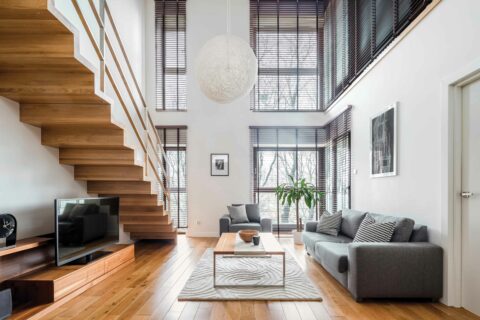Alberta is an excellent place for solar power. Our bright, bluebird days mean the sun shines all year long. Harvesting that energy is an effective way to save money, increase the value of your home, and help protect the environment. Solar is an investment that pays off over and over again, with each decreased energy bill. What’s more, both Canmore and Banff have great solar rebates if you’re looking at this upgrade for your home.
Why Solar?
Solar power is an efficient and green way to power your home. Solar energy doesn’t produce emissions, which is one of the key elements to reducing greenhouse gasses. For a two-person household, solar energy has the potential to reduce emissions by 3-4 tonnes each year. While energy is required to make the solar equipment and install it on your home, the carbon payback period is about 1 to 2 years, depending on the technology.
For investment properties and businesses, solar is an excellent option that showcases your dedication to environmental stewardship. It’s also good for business. With the current trends in marketing favouring businesses that have a positive stand on protecting the environment, installing solar panels will help boost morale and encourage people to support your efforts to run an environmentally friendly company.
“The average Alberta household consumes about 7200 KWH of electricity per year. In Alberta, this would require a solar PV system of around 6000 installed Watts to reach net-zero electricity use on a yearly basis. Assuming a cost of $2.50/Watt of installed capacity, this system would cost about $15,000.” – solaralberta.ca
The Basics
Solar Photovoltaics, or Solar PV, is the most common system used for solar electricity. Each Solar PV cell converts sunlight directly into energy. Cells are arranged into modules, which are arranged into an array, which can be wired together and mounted to a rack as a solar panel or incorporated into other materials such as shingles, railings, and other common building elements. The amount of energy you generate depends on the number of modules and how many cells are in each one.
The modules are designed to capture the sunlight and convert it to energy. That energy can then be connected to the power grid through a specialized metre, or it can be stored with batteries, which add to the cost of setup. Grid-connected Solar PV systems contribute excess electricity to the grid and pull from the grid if more power is needed. This usually results in a drastically reduced power bill, but it does not mean your home will be exempt from power outages when the grid goes down. For safety measures, your solar system wired this way will shut down as well until the grid is operational again.
Storing the energy with batteries means you don’t need a connection to the grid, but it also doesn’t provide you with back up energy if your Solar PV system can’t keep up with your energy demands. Most people opt to do a combination, where they’re connected to the grid with battery back up in case the grid goes down.
The Cost
The cost of solar is continually going down while the cost of electricity is continually going up. Long term, solar energy is a worthwhile investment that will pay for itself over time.
Once installed, Solar PV systems last between 30 and 40 years, making them a worthwhile investment that will continue to provide paybacks long after the initial cost is recuperated.
To learn more about solar technology and the specifics facing this province, visit solaralberta.ca.
Dispelling Solar Myths
- Snow will cover my panels, making them useless in the winter
A 5-year study by the Northern Alberta Institute of Technology showed that snow coverage only reduces productivity by 3%.
- I need to change the angle of my array throughout the year
Most Solar PV systems connected to the grid do not require changing to best capture the sunlight all year long. For off-grid systems that have greater need in the winter, owners often change the angle twice, during the spring and fall equinox. Make sure your system can be safely adjusted upon installation if you plan to go this route.
- It’s too cold for solar panels to work in the winter
Solar panels actually convert better in the winter because there is no resistance in the wiring. When constructing solar panels, engineers have to account for this increased performance during colder seasons.
- There isn’t enough sunlight for solar in the winter
There is plenty of sunlight during the depth of winter to generate power from solar panels. Both Canmore and Banff receive about 4.5 hrs of direct sunlight in the darkest days of winter solstice. Larger solar arrays will be necessary to capture non-grid energy systems, but on-grid systems will still generate savings all year round.
Incentives
Both Banff and Canmore offer incentives for residents and businesses to install Solar PV systems. The Town of Banff offers a rebate of $750/KW of solar capacity installed, to a maximum of 20 KW. The Town of Canmore offers solar incentive grants to residents and businesses to help offset the cost of purchasing and installing a solar electric system.



